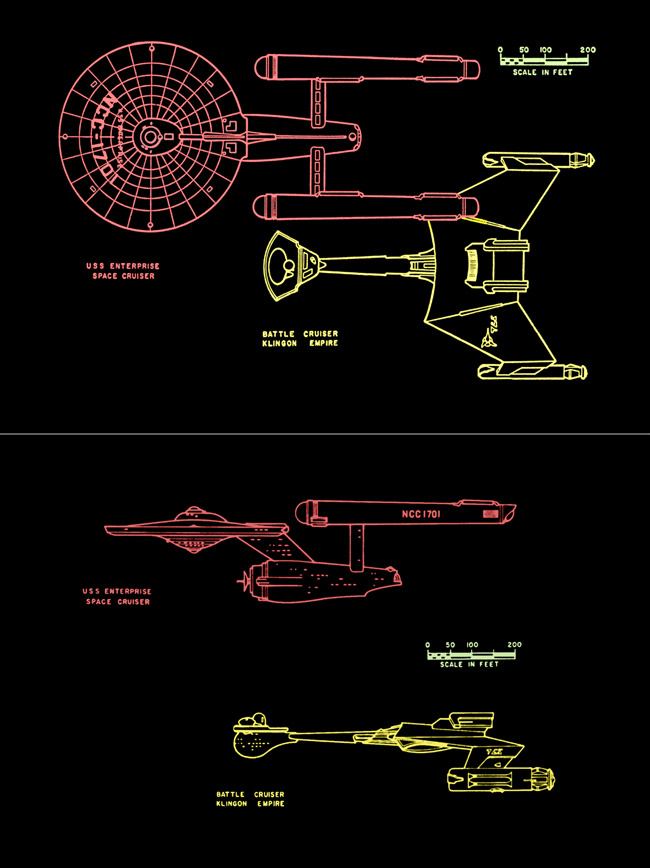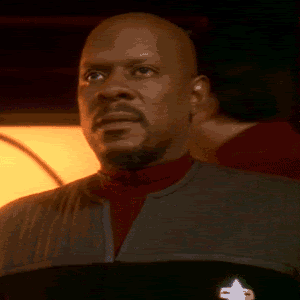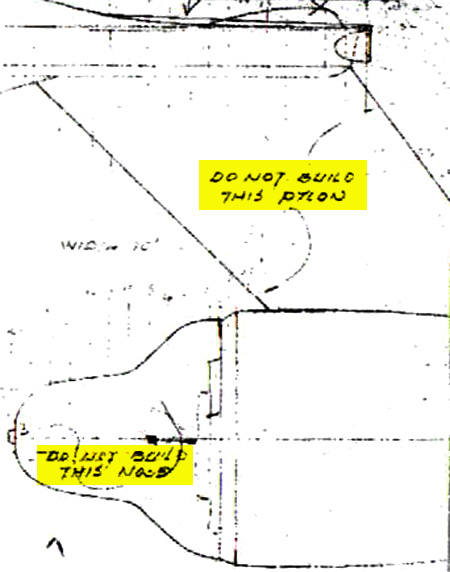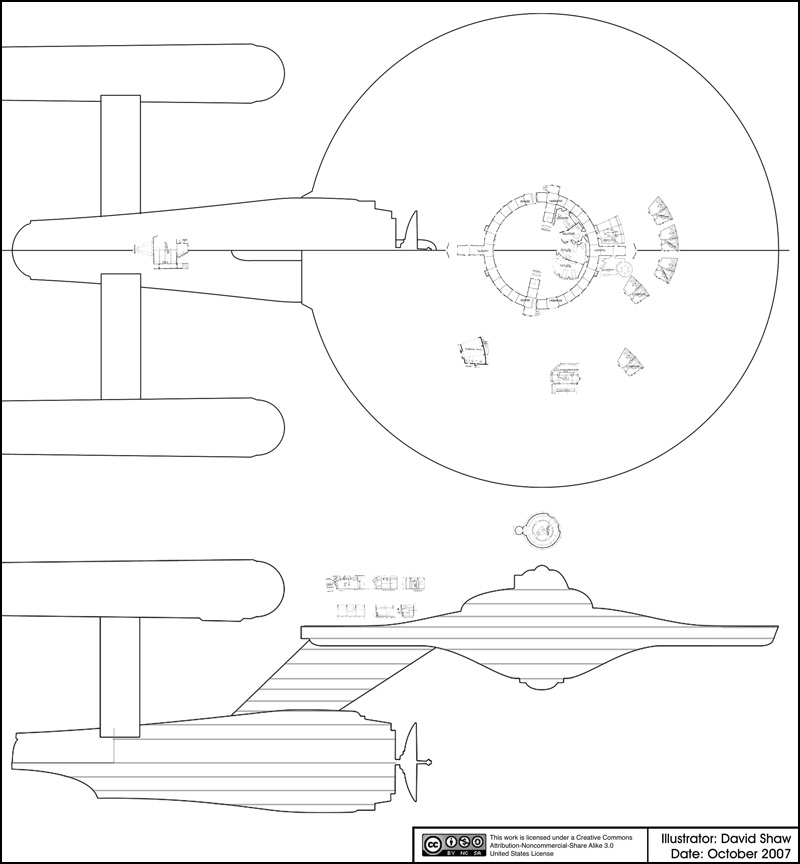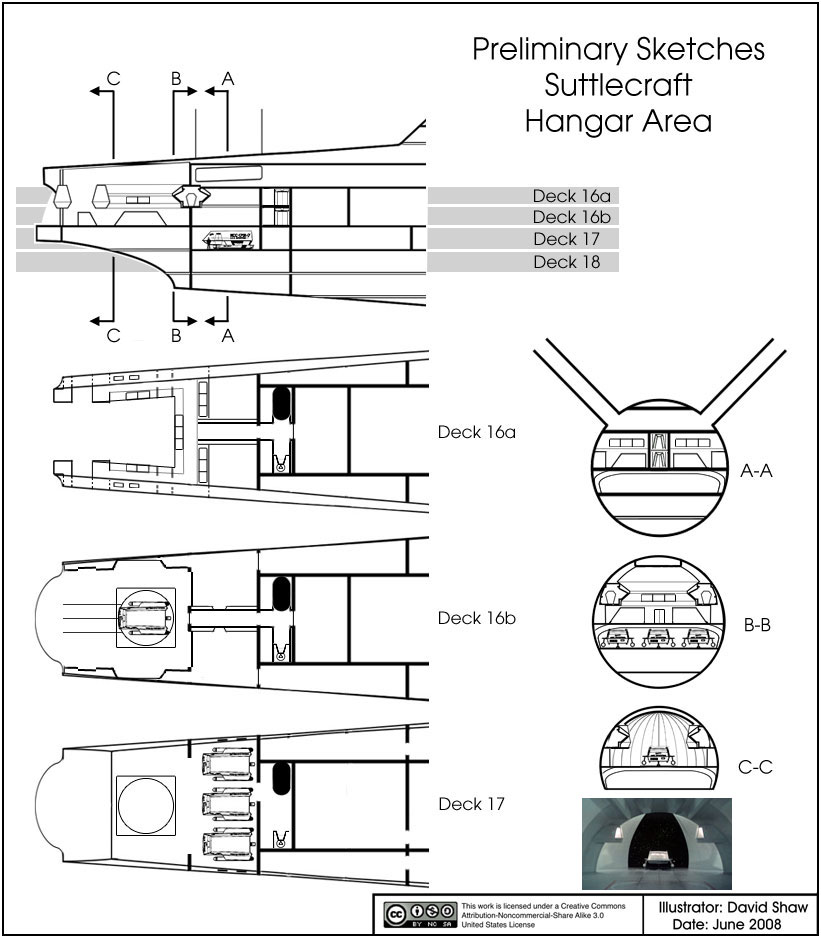Yeah... exactly! Just like the exact size of a communicator, tricorder or phaser were never given in any "canonical" sense. In fact, the number of things that don't have references in any relevant "canonical" sense is staggering.I don't know of any Star Trek episode that establishes the Enterprise as 947 feet long.
Bingo. There never was such a reference.
Which simply means that the length is not "canonical" in the only relevant sense. It doesn't mean that the length wasn't established for production purposes, in drawings like the elevations that Jefferies did and which have been available publicly at least since one was first reproduced in Analog and possibly before that.
Of course it would have been great if they had just shown us a diagram of the Enterprise on screen with a scale reference next to it...
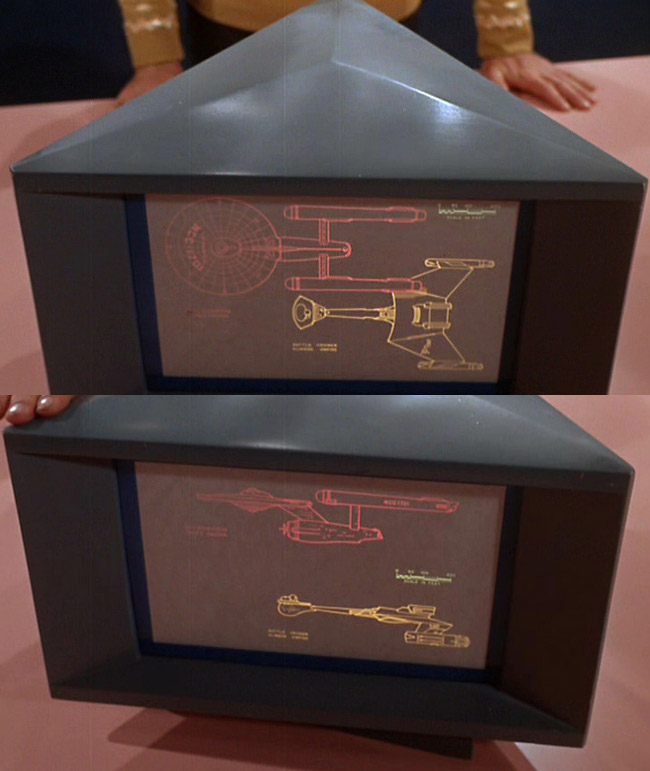
... that was made publicly available a month earlier (so we could have it in front of us while watching the show)...
... but that would have been too much to ask.
But yeah, the "947" number was never given on screen in a relevant "canonical" sense.
And seeing as what is canon for one person seems different than for another, I've avoided it by studying aspects of the production of TOS rather than trying to see what can be established on screen. Which was why I was happy to address the "exactly when in TOS production history" question.
And why November 7, 1964?
Jefferies may have been working from the scale for some time before that, but that was the day he finished and dated the drawings before giving them to Datin. If someone were to ask when exactly when in TOS production history the size of a phaser was nailed, I'd most likely use Jefferies' plans for the phaser in the same way (though I don't recall him dating those). But on screen, a phaser has a general size and general shape, but no "canonical" reference.
But it should be noted that general sizes and general shapes have been fine for TV dramas for years. Even in currently running shows like CSI we see them taking Blade Runnerestque type liberties to move the story along (which only becomes a problem when the viewers hold things they saw on that show up against real life... like when they are on a jury
 ).
).
